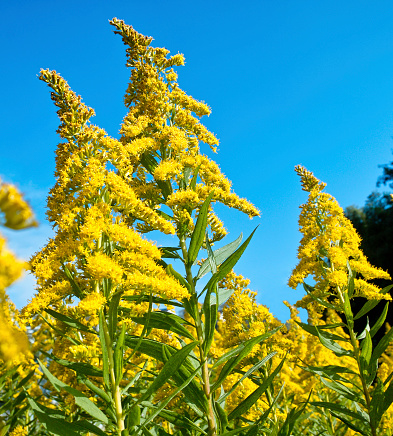Fall Allergy Season is Here – How to Prepare Your Home So You Don’t Suffer!
It’s easy to see why many people cite autumn as their favorite time of year: beautiful foliage, cooler temperatures, football and upcoming holidays full of festivity, family and feasts. But for some, the beauty of the season is dampened by the certainty of fall allergies – particularly ragweed allergies (also known as hay fever), which can cause sneezing, runny or stuffy noses, itchy throat and ears, itchy eyes and even hives. Additionally, it can cause asthma symptoms as well, since ragweed allergies can cause the nose and throat airways to become narrower.
According to the American College of Allergy, Asthma and Immunology, ragweed is a weed “that can grow almost anywhere but especially in the east and midwest of the United States. From August to November, ragweed blooms and releases pollen—a very fine powder also made by trees, grasses, and flowers. In many areas of the country, ragweed pollen levels are highest in mid-September.”

Some other examples of other weeds that can cause hay fever symptoms include:
- Burning bush (Kochia)
- Cocklebur
- Lamb’s quarters
- Pigweed
- Sagebrush/Mugwort
- Tumbleweed (Russian thistle)
A region’s weather patterns usually dictate the severity of a particular season. For example, farmers who ordinarily apply herbicides to crops may be hampered by especially wet spells where applying the herbicide is not possible. Weeds like ragweed, then, can grow larger than normal, which can create more of an issue for certain areas.
Giant ragweed – the main culprit for hay fever allergies – can grow up to 12 feet high. It’s more predominant than even common ragweed, and accounts for most of the hay fever pollen because of its prevalence and height. Wind can carry it for miles.
If you know you have a ragweed allergy, it can be a good idea to take precautions in order to lessen its effects. A doctor can prescribe an antihistamine, some of which are also available OTC. Nasal sprays, eye drops and even allergy shots can also offer relief. If your symptoms are really debilitating, make an appointment with a board-certified allergist, who can provide a more comprehensive approach.
Dr. Beth Corn, Associate Professor of Medicine at Mount Sinai Hospital in New York City, told CBS Minneapolis affiliate WCCO, “People wait too long and they wait until they are very symptomatic and they start taking medicines, but you are kind of behind the eight ball because you’re trying to catch up.”
For many, taking an antihistamine will ward off any problem. But if taking a daily dose of medicine isn’t optimal for you, what are some other non-medicinal ways to lessen hay fever symptoms?
First and foremost, check your local weather forecast. Your local paper will probably feature ragweed pollen counts, or you can search online for results in your zip code. If counts are high that day, strictly limit your time outdoors, even if it’s just running errands.
If you don’t have to go outside, don’t! This includes keeping windows closed in your home and car. If you do have to go outside, try to go out during the middle of the day, when pollen levels are at their lowest. Then immediately shower upon reentering your home, and toss the clothes you were wearing straight into the washing machine for laundering. This will help remove the pollen that can become attached to your hair, skin and clothing, which can then infiltrate the air and surfaces in your home.
Even if your pet goes outside, they can bring in pollen with them on their paws and fur. So Fido may need to be bathed (or at least rinsed off) more often, too.
Be sure to clean and replace furnace filters and air conditioning filters. The right filter can can remove 99% of pollen from the air in your home.
For those with allergies and breathing sensitivities, running a HEPA air purifier during peak allergy months (or year-long for those with more severe allergies and asthma) can help ensure that if any pollen does enter your home, it will be taken out of the circulated air. Additionally, air purifiers can remove other contaminants like pet dander, mold spores and dust that can also contribute to breathing difficulties.
For many who live in colder climates in the north and northeast, hay fever relief can come quicker than for those who live in warmer, southern states: the first frost of the season will end the life cycle of weeds like ragweed.



